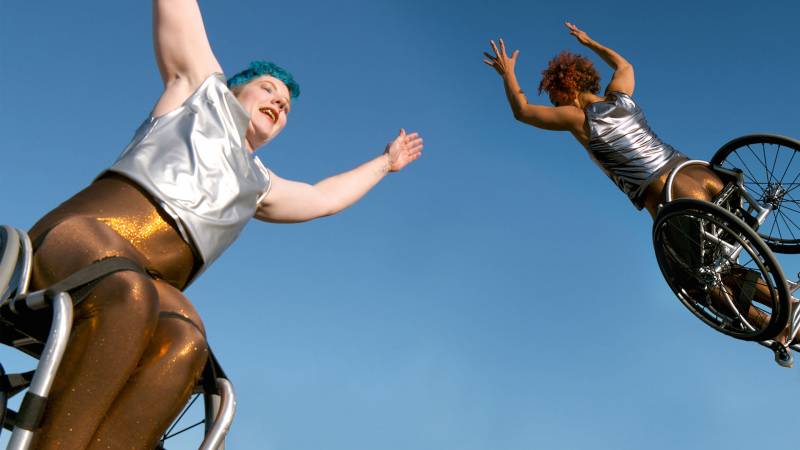Technology is embedded into my every day. It aids my wakefulness, it determines my commute, it defines the hours of my week. I’ve relinquished so many of my abilities to tech as it promises to alleviate more tasks from the mind and body. Which leads me to wonder: How does tech consider or exclude disabled bodies in the innovation process?
Over the past decade, the disabled community has reclaimed the term “crip” as a political and cultural identity. And in Recoding CripTech, opening Jan. 23 at San Francisco’s SOMArts, artists explore questions around access as they hack and reinvent technologies. Through often multisensory artworks, they ask: What are the barriers to access in current technology and how can they be dismantled? How can diverse bodies move, look or communicate through more creative approaches to tech?
The show is a product of SOMArt’s residency program for emerging curators. “We’d like our audiences to reflect on and question for whom technologies and spaces are built, and to whom they deny access,” say curators Vanessa Chang and Lindsey D. Felt. “By engaging a variety of senses in their interactions with museum spaces and artworks, we hope for them to understand how certain bodies have been privileged over others.”
The opening (Jan. 23, 6–9pm) includes a discussion between the exhibition artists and a Q&A led by disability scholar and UC Berkeley professor Karen Nakamura featuring disability activist and Disability Visibility Project creator and host, Alice Wong. And on Feb. 6, disability scholar and author Georgina Kleege guides participants through the exhibition relying on tactile and other non-visual sensory experiences.
CripTech calls on the tech industry to rethink their connection to the disabled community—instead of simply creating accommodations, the show advocates for putting disabled peoples at the forefront of innovation. –Vida Kuang


